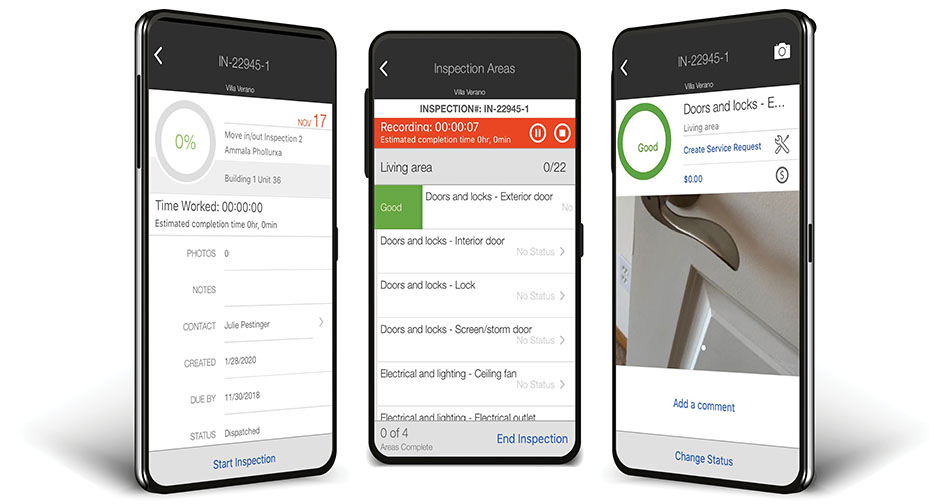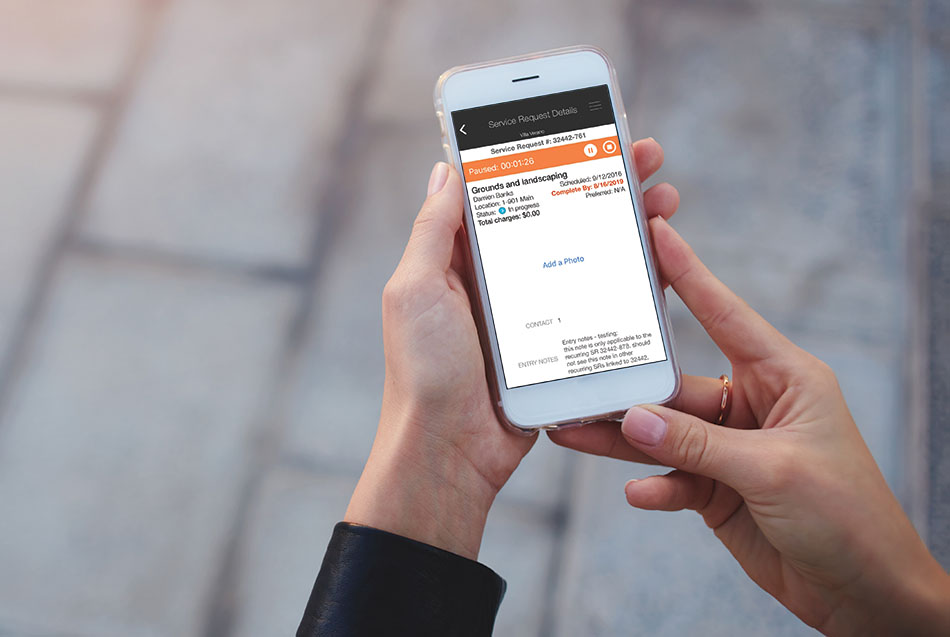The rapid advance of cyber technology is rendering what was new yesterday old hat tomorrow. Internet listing services that were cutting edge a decade ago are considered outdated as potential renters go directly to a community’s own website, where they can lease a unit, pay rent, submit maintenance requests and leave feedback about the services they receive with a few keystrokes.
Today, even mobile applications are standard tools in the multifamily industry, while their use and usefulness will continue to grow with the expansion of the Internet of Things (IoT).
The participants in the panel discussion “Multifamily 2029: 10 Innovations That Will Change Everything,” held during the National Apartment Association’s Apartmentalize conference last year, recognized mobile technology as a wave of the future.
The panel discussed innovations like sensors that detect leaks and perform maintenance checks on elevators and smart devices capable of submitting their own service requests directly to maintenance teams.
Even apartment maintenance technicians, once thought to be the most resistant in the industry to using cyber technology, have become comfortable with mobile applications over the past five years.
A Google search will pull up an extensive list of property maintenance apps, most of which were designed generically to be adapted for a variety of businesses. The results narrow when the search criteria targets apps developed specifically for multifamily.
“As the mobile app trend grows, we need to make sure that the software is designed for multifamily, not for another trade, like plumbing, and then brought into our industry,” said Mark Cukro, founder/owner of Harrisburg, N.C.-based Serviceteam Training that has provided technician certification training nationwide for 15 years.
Texas-based technology platform company RealPage, which has a long history of creating mobile apps for the facilities platform, created its Facilities Maintenance Mobile App expressly for the apartment space.
“Our first app was based on PalmPilot technology, to give you an idea of how long we’ve been working on this type of tech,” said RealPage Facilities Product Manager Bob Ishikawa.
The latest iteration, introduced around mid-2014 by the company’s San Francisco team, was designed as a native application for the iOS and Android platforms in order to leverage the technology built into those product’s operating systems—primarily for mobile phones, explained Ishikawa.
“This allowed us the option to work in an offline mode. For instance, if I download the data from the site I am working on, I don’t have to be connected for the rest of the day. I can be out in the field, go through my tickets and then synch everything back up when I get back to some sort of connectivity,” he said.
Other benefits include the ability to create data reports more quickly and being able to track trends such as how many light bulbs were replaced over time.

The right choices
Cukro notes that most mobile technology has functions people don’t use. “Property managers must figure out what metrics they want and how deep and involved they want to get with the technology. How much time do you want to take away from working on tasks because you are working on technology? If you have to update files for four hours a day, that’s not beneficial, because now you’ve taken four hours out of the field,” he said.
The developers of the Facilities Management App worked closely with RealPage clients who use the technology in the field to ensure it would meet their needs and overcome any obstacles challenging them. Maintenance of the app has been moved to RealPage’s Richardson, Texas, office, where the team there continues to work on new enhancements.
The app is available to RealPage clients as part of the Facilities OneSite world and desktop piece, but also interacts with the OpsTechnology spend management software, said Ishikawa.
This means if the maintenance team is using inventory that has been uploaded to the mobile application, the system will replenish inventory levels as they are depleted, allowing the maintenance team to act as both purchasing agent and technician.
TELACU Residential Management, a Commerce, Calif.-based non-profit chartered as a community development corporation that develops and manages its own affordable and third-party assets, finds the app especially helpful for HUD reporting purposes.
“We use our mobile tablets to track big ticket appliances like refrigerators, stoves and air conditioners at the properties and it streamlines our paperwork and workflow for accounting. We need that information to report to HUD for reserve and replacement documentation. We also utilize the app for our make-ready board for vacant units, so we can have them ready on time and track when contractors show up at the property to complete a job,” said TELACU Business Systems Analyst Javier Gutierrez.
TELACU rolled out the app across 33 communities four years ago after a successful two-property test run.
Time is everything
The Facilities Management App has proven to be a time saver for RealPage clients. While the numbers vary from company to company, users report saving an average of about five minutes per service request.
“Multiply that by the number of service requests maintenance does on an annual basis and it’s a huge amount of time saved that can be used for many different things. Maybe they don’t have to call outside contractors to come and work on stuff. Maybe they get to work on deferred maintenance, which also saves money. Maybe they get to work on more training,” said Ishikawa.
Take the experience of John Riggs, senior service manager of transition for North Carolina-based apartment developer and manager Blue Ridge Companies.
Interested in becoming more “green” by cutting out paper waste, Blue Ridge rolled out the app across its 58-property portfolio five years ago.
“Our turnaround ratio is much quicker. We can receive work orders as the residents enter them, hot off the press so to speak. No more lost orders, paper work or sticky notes. While in the field we might get an order for a smoke detector battery and we all have one in our tool box, so we can take care of it without going back to the office to get the work order. It speeds up the process about two-fold. I started in this industry in 1975, so you can imagine the lack of tech I started with. Now that I am used to the app, I don’t know how we lived without it,” said Riggs.
Additional time is saved completing move-in and move-out inspections on the app, which allows techs to take and upload images and set the status of the units as good, fair or needs repair, or whatever criteria they set up.
“Now you have documentation that an inspection has been completed, a problem has been found and a service request created and someone is going to fix it. The entire process gets tracked with images to clear up any question about why something was fixed or charged back to a resident. Our clients see average savings of 30 minutes per inspection on move-in/move- outs,” said Ishikawa.
Mobile tech has come a long way over the past decade, but there are still improvements to be made, said Cukro.
“While the dispatch function is wonderful and is supposed to save time, it has to work like the people in the field need it to work and not the way the company promises it will work,” he said.
For instance, Riggs said, “We would like to be able to see who is taking the work order, so two people don’t take and run with it but sometimes two technicians are actually needed for a job. RealPage is working with us on that.”

Learning curve
Today just about everyone has a smart device, said Ishikawa, so they don’t have to be provided.
But Cukro believes that if technicians are required to use their phones as part of their job, the company should either provide one or compensate the technicians for usage of their own devices.
TELACU provides its maintenance staff with tablets and Android phones on which they use the app, but currently is only using the app’s service request and unit inspection tools.
Riggs, who is in charge of all training for his company, including the facilities management app, has seen some pushback to its use, mostly from older technicians.
“We use a tablet on most properties and most of our technicians use the app. As an incentive to get them to use it, we offer a $100 bonus each month if they log a 95 percent usage rate for service requests,” he said.
According to Ishikawa, RealPage’s app was designed to be as simple as possible.
“The companies with training programs want to ensure their techs use the app correctly, but we have a number of maintenance people who open the app for the first time in the morning and before lunch they are able to use it proficiently. Some of the companies that do the extensive training have initiatives that must be tied in to the use of these applications, but that’s outside of how the app is used and the training needed to use it,” he said.
Gearing up for IoT
As the apartment industry adopts more complex connected systems like HVAC, thermostats, lighting, door locks and even resident’s own IoT-connected appliances, the learning curve for maintenance staff will increase. Millennials entering the workforce are already well prepared for this change, having grown up computer savvy with mobile devices in hand.
RealPage is preparing for the coming onslaught of smart devices by enabling the connectivity between its own platform and the new ones coming online.
“Rather than building out a platform for each device, which would be prohibitive, our clients can choose which devices they want to use and what IoT provider to go with, and we will integrate with them. We are testing a new integration this weekend that will expand the options even more for our clients” said Ishikawa in early March.
Author Wendy Broffman















